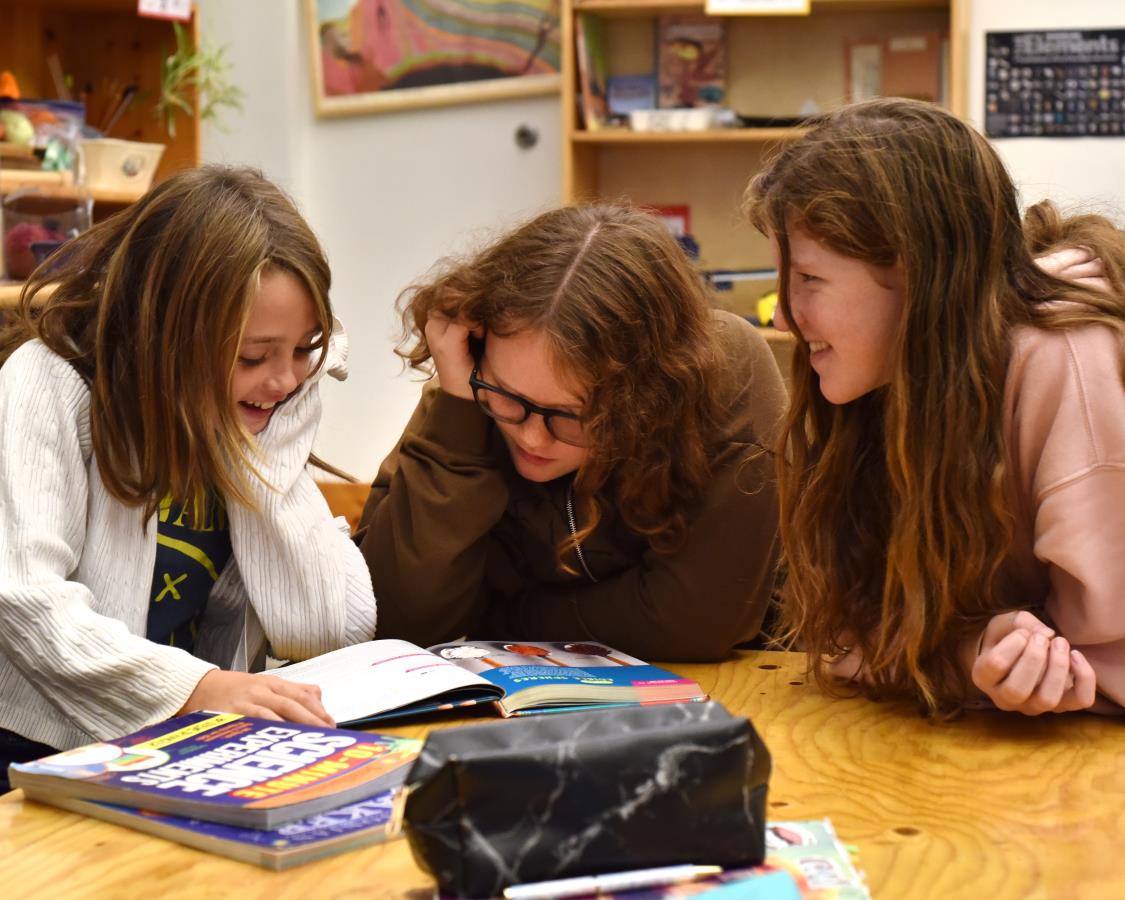As Montessori teachers, we are trained to anchor our service to the child in the foundational principle that education should be an “aid to life.” To achieve this lofty, yet practical goal, we strive to foster the development of lifelong learners through the joyful discovery of specific skills and concepts, the wonders of the expanding world around them, and what matters to them and what type of person they want to be.
Whether you observe a Nido or Junior High classroom or any Montessori classroom in between, you see an environment carefully designed to optimize the development of critical skills and the acquisition of key concepts. Dr. Montessori’s observation of children in action confirmed that they are in the process of self-construction. Infants need the freedom to move and explore in order to strengthen their gross motor skills and discover the immediate world around them. Young children continue this discovery, building their physical, emotional, and cognitive skills, as they walk down the hallway to the gym, combine ingredients to make muffins, or sing songs with friends. The Primary environments allow children to continue this development of skills that aid in their everyday life. You can’t learn how to tie your shoes, zip your coat, or clean up after yourself if you don’t get to discover how to do so. These practical skills continue to be encouraged in Elementary and Junior High. Keeping track of a home folder, making your lunch, completing your classroom job, navigating the highs and lows of friendships - only by doing can you discover your strengths and areas of challenge. Yes, not all of these discoveries come about joyfully. However, once the skill has been mastered or the concept grasped, joy is clearly a by-product of this hard work. The smile that appears at the end of the thousand chain says it all!
In addition to the environment, Montessori materials foster a joyful learning experience and discovery of the vast possibility the world has to offer. The concrete materials of Nido exist, too, in Junior High. The infant and the adolescent have hands-on experiences every day. These concrete materials span the developmental stages and create a bridge of discovery. For example, the trinomial cube of Primary that allows the child to build sensory and spatial skills in a puzzle-like manner, later allows Elementary children to hold the cube of the sum (a + b + c) in their hands and, from that, derive the formula. These concrete materials allow for the discovery of concepts and the development of an abstract understanding. Using all the senses strengthens neural pathways and makes learning more enjoyable. Ask your elementary child if they enjoy the grammar command cards and you’re sure to elicit a smile.
As the children grow, their environments expand, thus allowing for further discovery. The Primary child ventures outside the classroom to plant seeds in the raised beds, care for them, and watch them grow. The elementary child plans an outing into the local community or interviews a specialist to expand and deepen the learning that started with research in the classroom. The adolescent learner travels to historic sites to make “real” the events that occurred and the lessons learned.
Even the way we are trained to give lessons allows for discovery. The Primary guide silently completes a sequence of skills while the attentive child observes. The child then models these actions, internalizing the lesson and constructing themselves. In Elementary, we use concrete materials to support the children’s discovery of patterns and to allow them to experience those lasting “ah ha” moments of learning. Their faces light up when they see the pattern created by multiplying or dividing fractions or when they can physically see the Pythagorean theorem by manipulating the metal insets. As guides, we do not give all the answers. We wonder along with them. We plant seeds of inquiry through our Great Stories of the Creation of the Universe, the Coming of Life, the Coming of Humans, Communication through Signs, and the Story of Numbers. These stories are intended to spark curiosity and encourage the children to enthusiastically pursue their interests.
It is through all these methods of discovery and real-life experience that the children construct themselves and begin to discern what matters to them and what kind of person they’d like to be. Mistakes will be made in all areas of learning. As previously stated, this process may not always appear joyful to the observer or feel joyful to the participant, but an “aid to life" would not be helpful if it posited that existence is easy, rosy, and perfect. The ultimate goal is to support the child’s development into becoming a lifelong learner, so when joy is not part of the equation, they can use their skills and intellect to find those parts of being human that bring them joy more often than not.
Lifelong learning through joyful discovery. What a gift and valiant pursuit for all of us to embrace and support. Thank you, Dr. Montessori, for providing a framework from which we can all continue to grow and discover.
